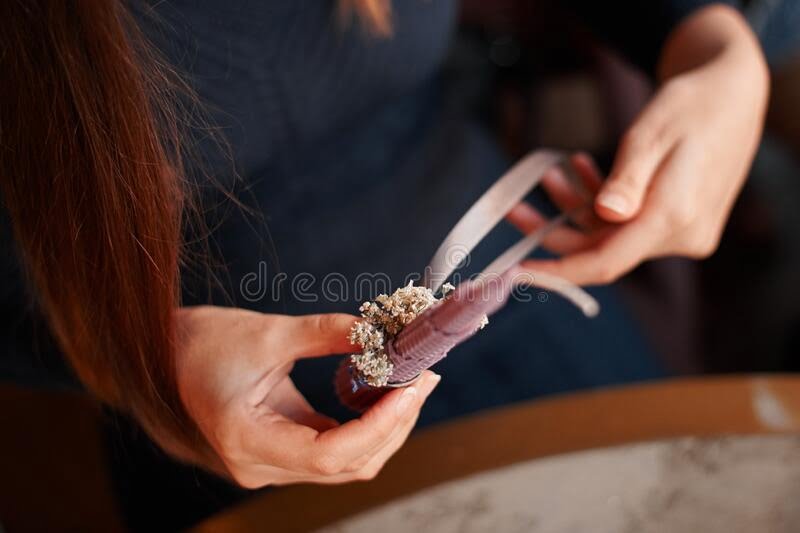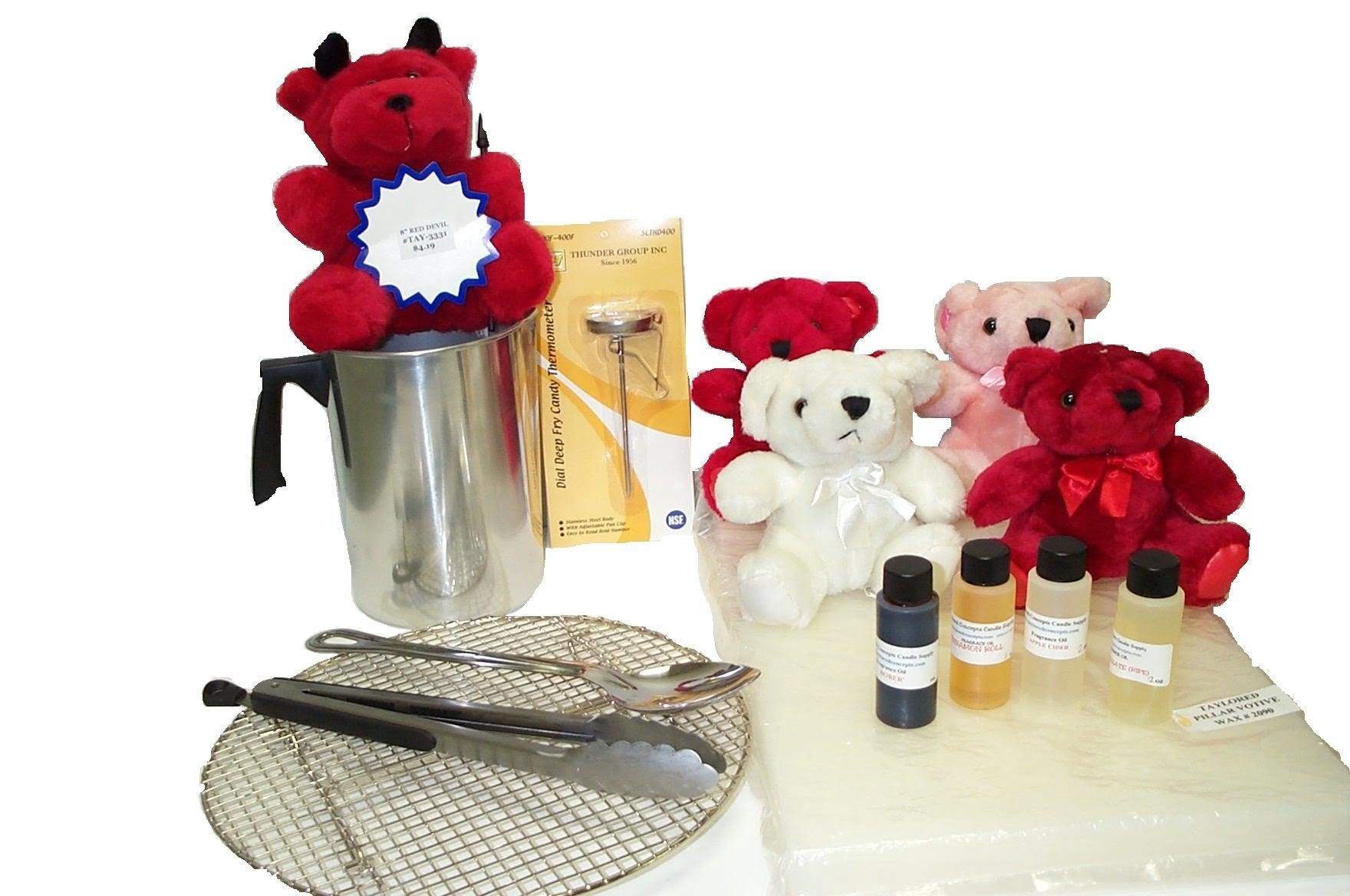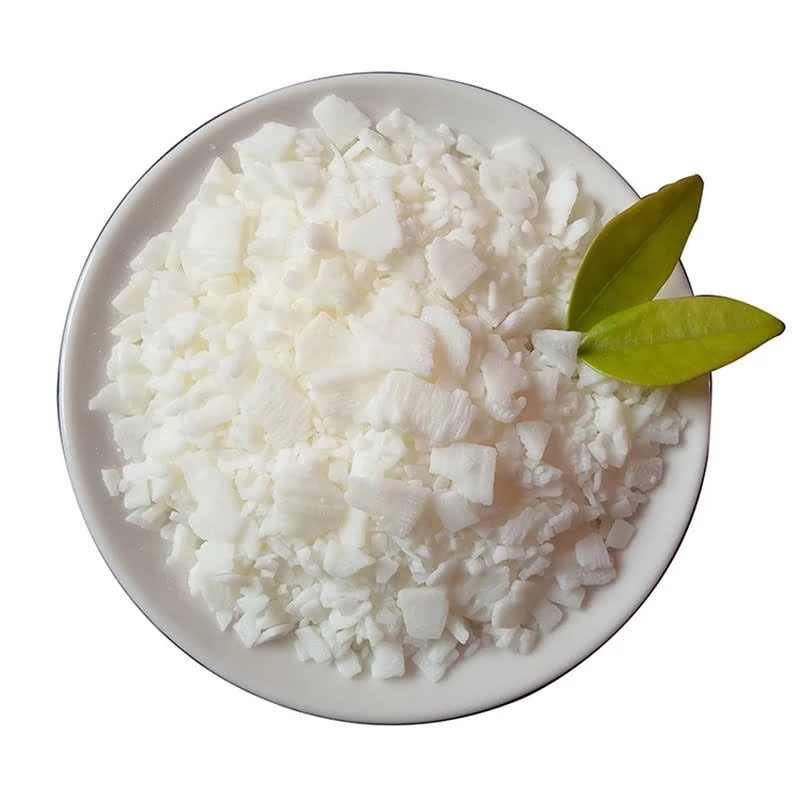Candle making is an ancient art that has captivated people for centuries. The process of creating a beautiful, scented candle from scratch is not only relaxing and therapeutic, but it also allows individuals to express their creativity and create personalized gifts or home decor items. One crucial element in the candle making process is the use of pillar moulds.
Pillar moulds are an essential tool in candle making, as they help shape and form the candles into unique and elegant designs. These moulds provide structure and stability to the candles, allowing them to burn evenly and maintain their shape. Whether you’re a beginner or an experienced candle maker, understanding the importance of pillar moulds and how to choose the right one for your projects is essential.
In this article, we will delve into the world of candle making, exploring its history from ancient times to modern-day techniques. We will then focus on one vital aspect of the craft – pillar moulds. We will discuss different types of moulds available in the market, their benefits, and factors to consider when choosing one for your specific needs. Additionally, we will provide a step-by-step guide on how to use a pillar mould effectively.
Join us as we embark on this creative journey into the art of candle making with a particular focus on pillar moulds. Whether you’re an enthusiast looking to enhance your skills or someone who wants to try their hand at candle making for the first time, this article aims to provide valuable insights and practical tips that will help you create beautiful candles with ease. So let’s dive in and unravel the artistry and versatility of candle making.
History of Candle Making
Ancient Origins: The Birth of Candle Making
Candle making is an art form with a rich history that dates back thousands of years. The earliest evidence of candle making can be traced back to ancient civilizations such as Egypt and Mesopotamia. In these early times, candles were typically made from natural materials like beeswax or tallow, which were readily available and easy to work with.
The Middle Ages: Advancements in Candle Making Techniques
During the Middle Ages, candle making began to evolve as new techniques and materials were introduced. The introduction of bayberry wax, for example, provided a more sustainable alternative to traditional beeswax candles. Additionally, the development of wick-making techniques allowed for the creation of longer-lasting and more efficient candles.
Industrial Revolution to Modern Day: Innovation in Candle Production
The industrial revolution brought significant advancements in candle production. With the discovery of paraffin wax and the invention of machinery for mass production, candles became more affordable and accessible to the general population. This period also saw the rise of decorative and scented candles, adding another dimension to the art of candle making.
Today, candle making continues to thrive as both a hobby and a business venture. Despite advancements in technology and alternative sources of lighting, there is still something timeless and captivating about the soft glow and mesmerizing flicker of a handmade candle. By understanding the history behind this age-old craft, we can appreciate both its roots and its endless possibilities for creativity in modern times.
Different Types of Candle Making Moulds
Pillar moulds are a popular choice among candle makers due to their versatility and ability to create stunning pillar candles. These moulds come in various shapes and sizes, allowing for endless creative possibilities. In this section, we will explore the different types of candle making moulds, with a focus on pillar moulds and their unique benefits.
When it comes to pillar moulds, there are several options available on the market. The most common types include aluminum, silicone, polycarbonate, and plastic moulds. Each material has its own advantages and considerations when choosing the right one for your candle making project.
One of the main benefits of using a pillar mould is that it creates candles with a uniform shape and smooth finish. This is especially important if you want to create professional-looking candles for gifts or selling purposes. Pillar moulds also offer versatility in terms of size and shape options. Whether you prefer long cylindrical pillars or shorter decorative shapes, there is a pillar mould available to suit your needs.
To help you make an informed decision when selecting a pillar mould for your candle making project, consider factors such as size, shape, and material. The size of the mould will determine the dimensions of your finished candle, so be sure to choose one that fits your desired specifications. Additionally, the shape of the mould will influence the overall aesthetic of your candle. Lastly, consider the material of the mould based on factors such as durability and ease of use.
In conclusion,
| Types | Benefits |
|---|---|
| Aluminum | Durable and heat-conductive |
| Silicone | Flexible and easy release |
| Polycarbonate | Transparent and long-lasting |
| Plastic | Affordable and lightweight |
Factors to Consider When Choosing a Pillar Mould for Candle Making
When choosing a pillar mould for candle making, there are several factors to consider. The size, shape, and material of the mould can all play a significant role in the outcome of your candles.
First and foremost, it is important to consider the size of the pillar mould. The size of the finished candle will depend on the size of the mould, so choose accordingly based on your desired end result. Pillar moulds come in various sizes, ranging from small votive candles to larger statement pieces. Consider what kind of space you have available for displaying or burning your candles, as this may also influence your choice of size.
The shape of the pillar mould is another important factor to consider. Traditional pillar moulds are cylindrical in shape, but there are also other options available such as square or rectangular shapes. The shape you choose will depend on your personal preference and the overall aesthetic you want to achieve with your candles.
Lastly, consider the material of the pillar mould. Most pillar moulds are made from metal or plastic. Metal moulds tend to be more durable and long-lasting, but they can retain heat for longer periods during the cooling process which may affect the quality of your candles.
Plastic moulds are typically cheaper and easier to work with since they do not retain heat as much as metal ones do. However, they may have a shorter lifespan compared to their metal counterparts.
In summary, when choosing a pillar mould for candle making, it is essential to consider factors such as size, shape, and material. Carefully selecting these elements will help ensure that you create beautiful and functional candles that meet your specific needs and preferences.
| Factors | Considerations |
|---|---|
| Size | Choose based on desired candle size and available space. |
| Shape | Consider personal preference and desired aesthetic. |
| Material | Weigh durability, heat retention, and cost factors. |
Step-by-Step Guide
Gathering Materials
To begin using a pillar mould for candle making, gather all the necessary materials. This includes the pillar mould itself, wax flakes or blocks, a double boiler or melting pot, a thermometer, wick material, wick sustainers or tabs, fragrance oils or essential oils (if desired), and any decorative elements such as dried flowers or herbs. It is important to have all these materials on hand before starting the candle-making process.
Preparing the Mould
Before pouring the melted wax into the pillar mould, it is essential to prepare the mould properly. Start by thoroughly cleaning and drying the inside of the mould to ensure it is free from any debris or residue. Next, carefully thread a piece of pre-cut wick material through the hole at the bottom of the mould. Pull it through until there is an equal length of wick on both sides of the hole.
Once the wick is in place, secure it in its desired position by attaching a wick sustainer or tab at the bottom of the mould. This will keep the wick centered during pouring and burning. Make sure that the sustainer is tightly secured at the bottom so that it doesn’t move during pouring.
Pouring and Setting
With everything prepared, it’s time to melt the wax and pour it into the pillar mould. Place your desired amount of wax flakes or blocks in a double boiler or melting pot over low heat and monitor its temperature using a thermometer. Stir occasionally to ensure even melting. Once your wax has reached its recommended melting point (usually around 160-180 degrees Fahrenheit), remove it from heat.
Carefully pour the melted wax into your prepared pillar mould, taking care not to spill or splash. Fill up to about 1/4 inch below the top edge of your mould to allow for shrinkage when cooling and settling. Be mindful of the amount of fragrance oil or essential oil to add, if desired, as some scents may require different concentrations.
After pouring, allow the candle to cool and set completely. This process typically takes a few hours, but it is best to let it sit overnight for optimal results. Avoid moving or disturbing the mould while the wax is still liquid to prevent any distortion or misalignment of the wick. Once fully set, your candle can be removed from the mould by gently pushing on the bottom hole and carefully pulling out the candle.
By following these step-by-step instructions, you can confidently use a pillar mould for candle making and create beautiful handcrafted candles at home. Remember to always exercise caution when working with hot wax and open flames, and enjoy the creative process of making your own unique candles.
Tips and Tricks for Successful Candle Making Using Pillar Moulds
Pillar moulds are a popular choice for candle makers due to their versatility and ability to create beautiful pillar candles. However, using a pillar mould requires some skill and knowledge to achieve successful results. In this section, we will explore some tips and tricks for successful candle making using pillar moulds, as well as common mistakes to avoid.
One of the most important factors to consider when using a pillar mould is choosing the right wax. Pillar waxes are typically harder and have a higher melting point than container waxes, making them more suitable for use in moulds. It’s also important to choose a wax that has good adhesion to the sides of the mould, as this will help prevent unsightly gaps or air pockets in your candles.
Another key tip for successful candle making with pillar moulds is to ensure proper wick placement. The wick should be centered in the mould before pouring the wax, which can be done using a wick centering device or by manually holding the wick in place. A centered wick not only ensures an even burn but also helps prevent tunneling, where the candle burns straight down without utilizing all of the wax.
Temperature control is another crucial aspect of successful candle making with pillar moulds. It’s important to pour the wax at the correct temperature, as pouring it too hot can cause shrinkage and cracking of the finished candle, while pouring it too cool can result in poor adhesion between layers if you’re creating layered candles.
In addition to these tips, there are also common mistakes that beginners should be aware of when using pillar moulds. One mistake is overloading the mould with too much wax, which can lead to overflow and mess. It’s essential to follow the recommended fill level for your specific mould size and shape.
| Tips | Tricks |
|---|---|
| Choose the right wax | Center the wick |
| Control pouring temperature | Avoid overloading the mould |
By following these tips and avoiding common mistakes, you can achieve successful candle making using pillar moulds. With practice and experimentation, you can create stunning pillar candles that will enhance any space or occasion.
Creative Possibilities with Pillar Moulds
Candle making with pillar moulds offers endless creative possibilities for designing and decorating unique candles. Whether you’re a beginner or an experienced candle maker, pillar moulds allow you to experiment with different shapes, sizes, and decorative techniques to achieve stunning results. In this section, we will explore the various candle designs and decorative techniques that can be achieved using pillar moulds.
One of the advantages of using pillar moulds is the ability to create candles in different shapes and sizes. With a wide range of mould options available, you can make pillar candles in traditional cylindrical shapes or explore more unconventional designs such as square, rectangular, hexagonal, or even geometric patterns. The versatility of pillar moulds allows you to tailor your candle designs according to your preferences or the occasion for which they are intended.
When it comes to decorative techniques, the possibilities are truly limitless. Pillar candles can be adorned with intricate carvings or embossed patterns using specialized carving tools and stamps. You can also experiment with different colors and textures by adding layers of colored wax or incorporating natural materials like dried flowers, leaves, or herbs within the candle‘s structure. Additionally, you may choose to apply surface decorations such as glitter, beads, ribbons, or lace to enhance the aesthetics of your candles.
To achieve these creative designs successfully, it is important to consider a few key factors when using pillar moulds:
1. Temperature control: Maintaining proper temperature throughout the candle-making process is crucial for achieving clean lines and preventing cracking. It is essential to follow specific guidelines regarding heating and pouring temperatures based on the type of wax used.
2. Release agents: To ensure that your finished candles easily separate from the mould without sticking or damaging their design details, it is recommended to apply release agents such as mold release spray or a thin layer of vegetable oil before pouring the wax.
3.Feeding holes: For intricate designs where multiple layers need to be poured separately into the mould, consider incorporating a feeding hole to prevent air gaps between layers and ensure adhesion.
By experimenting with different candle designs and decorative techniques using pillar moulds, you can elevate your candle-making skills to new heights. Let your creativity flow and explore the endless possibilities that pillar moulds offer in creating beautiful and personalized candles for yourself or as unique gifts for others.
Candle Making with Kids
Candle making can be a fun and educational activity for kids, allowing them to explore their creativity while also learning about different materials and processes. Using pillar moulds in candle making projects with children can provide a safe and enjoyable experience. Here are some child-friendly candle making projects that you can try using pillar moulds:
- Basic Pillar Candles: Start by explaining the importance of safety when working with hot wax and open flames, and make sure to supervise the children throughout the process. For this project, you can use pre-made pillar moulds or even plastic containers like empty yogurt cups or milk cartons as makeshift moulds.
Allow the kids to choose their preferred colors and scents for their candles, and guide them in measuring and melting the wax. Pour the melted wax into the moulds, insert a wick, and let it cool completely before removing it from the mould. - Shaped Pillar Candles: To add more excitement to your candle making project, consider using decorative shaped pillar moulds that are specially designed for kids. These moulds come in various fun shapes such as animals, flowers, or cartoon characters that will capture their imagination. The process is similar to making basic pillar candles but with the added step of filling these unique moulds with melted wax.
- Embedded Objects Candles: This project allows children to add their personal touch to their candles by embedding objects such as small toys or natural materials like dried flowers or leaves into the wax before it solidifies. To avoid any accidents or fire hazards, choose non-flammable objects suitable for embedding in candles and supervise closely during this process.
When engaging children in candle making projects using pillar moulds, there are a few important considerations to keep in mind:
– Use non-toxic materials: Ensure that all materials used are safe for children and do not contain any harmful chemicals or toxins. Opt for natural waxes like soy or beeswax, as they are less likely to release harmful fumes when burned.
– Practice safety measures: Teach children about the importance of safety when working with hot wax and open flames. Always supervise them closely during the entire candle making process and provide guidance on proper handling of materials and tools.
– Encourage creativity: Allow children to express their creativity by letting them choose colors, scents, and decorative elements for their candles. This will make the experience more enjoyable for them and foster their imagination.
By engaging in child-friendly candle making projects using pillar moulds, children can develop various skills such as patience, concentration, and problem-solving while also creating beautiful candles that they can be proud of.
DIY Pillar Mould Alternatives
One of the great things about candle making is the ability to get creative and experiment with different shapes and designs. While there are various types of moulds available on the market, sometimes you may want to try something new or simply don’t have a mould on hand. In these situations, it can be helpful to know some DIY alternatives for creating your own moulds from everyday objects.
One option for making your own pillar mould is using a cardboard tube, such as those from paper towel or toilet paper rolls. These tubes provide a cylindrical shape similar to a traditional pillar mould and are easily accessible. To use a cardboard tube as a mould, simply cut it to your desired length and secure one end with tape or glue. This makeshift mould can then be filled with melted wax and left to cool and solidify.
Another household item that can be repurposed as a candle mould is a milk carton. The rectangular shape of milk cartons makes them suitable for creating square or rectangular pillar candles. To use a milk carton as a mould, rinse out any remaining milk, cut off the top portion, and seal the bottom with tape or hot glue. The resulting container can then be filled with wax and left to harden before removing it from the carton.
If you’re looking for more unique shapes, silicone baking molds can also be utilized as candle moulds. Silicone molds come in a wide variety of designs, including flowers, animals, and geometric shapes. They are flexible and easy to release candles from once they have set. Simply pour melted wax into the silicone mold, wait for it to cool completely, and then gently push on the bottom of the mold to release the finished candle.
When using DIY alternatives for pillar moulds, it’s important to consider safety precautions such as ensuring objects are heat resistant and sturdy enough to withstand hot wax. Additionally, keep in mind that these improvised methods may not produce perfectly symmetrical or professional-looking candles. However, they can be a fun and cost-effective way to explore different candle shapes and designs without needing to invest in specific moulds.
Troubleshooting Common Issues
Uneven Cooling
One common issue that candle makers may encounter when using pillar moulds is uneven cooling, which can result in an unsightly finished product. To prevent this problem, it is important to ensure that the wax is poured at the correct temperature and that the mould is properly preheated.
If the wax is too hot or if the temperature fluctuates too much during cooling, it can cause uneven cooling and result in a lopsided candle. Using a thermometer to monitor the wax temperature throughout the process can help prevent this issue.
Sticking Candles
Another common problem with pillar moulds is that sometimes the candles stick and are difficult to remove once they have solidified. This can be frustrating for candle makers who put time and effort into creating their candles, only to have them ruined when attempting to remove them from the mould. To address this issue, it is important to properly prepare the pillar mould before pouring in the wax.
This can be done by applying a release agent such as silicone spray or non-stick cooking spray to the inside of the mould before pouring in the wax. Additionally, allowing the candle to thoroughly cool and shrink before attempting removal can also help prevent sticking.
Cracking or Breaking Candles
Cracking or breaking of candles when using pillar moulds can be another frustrating issue for candle makers. This often happens when there is a sudden change in temperature from hot to cold, causing stress on the wax and resulting in cracks or breaks.
To avoid this problem, it is crucial to allow enough cooling time before removing the candle from the mould, as well as avoiding placing freshly made candles directly into cool environments. Gradually acclimating them to room temperature over several hours can help prevent cracking or breaking.
By being aware of these common issues and implementing the appropriate measures, candle makers can troubleshoot problems that may arise when using pillar moulds. Taking the time to address these issues will not only result in better quality candles, but also save time, money, and frustration. With proper troubleshooting techniques, candle makers can achieve beautiful and flawless candles using pillar moulds.
Conclusion
In conclusion, pillar moulds play a crucial role in the art of candle making, providing a versatile and beautiful way to create unique and personalized candles. Throughout history, candle making has evolved from a necessity to an art form, and pillar moulds have been there every step of the way. Their durability and ability to achieve various shapes and sizes make them an essential tool for candle makers.
When choosing a pillar mould, it is important to consider factors such as size, shape, and material. These factors can greatly impact the final outcome of your candles. Taking the time to carefully select the right mould for your desired design will ensure successful results.
Using a pillar mould for candle making may seem intimidating at first, but with the step-by-step guide provided in this article and some practice, anyone can master this craft. It is important to follow best practices and learn from common mistakes in order to achieve the desired results.
The possibilities with pillar moulds are endless. From exploring various candle designs and decorative techniques to involving kids in child-friendly projects, there is no limit to what can be created with these moulds. Additionally, for those who enjoy DIY projects, alternative ways to make your own moulds using everyday objects open up even more creative opportunities.
In conclusion, embracing the versatility and beauty of candle making with pillar moulds allows individuals to express their creativity while enjoying the calming ambiance that candles provide. Whether you are a beginner or an experienced candle maker, incorporating pillar moulds into your craft will enhance your skills and open up a world of creative possibilities. So why not try making your own candles today?

Welcome to my candle making blog! In this blog, I will be sharing my tips and tricks for making candles. I will also be sharing some of my favorite recipes.





